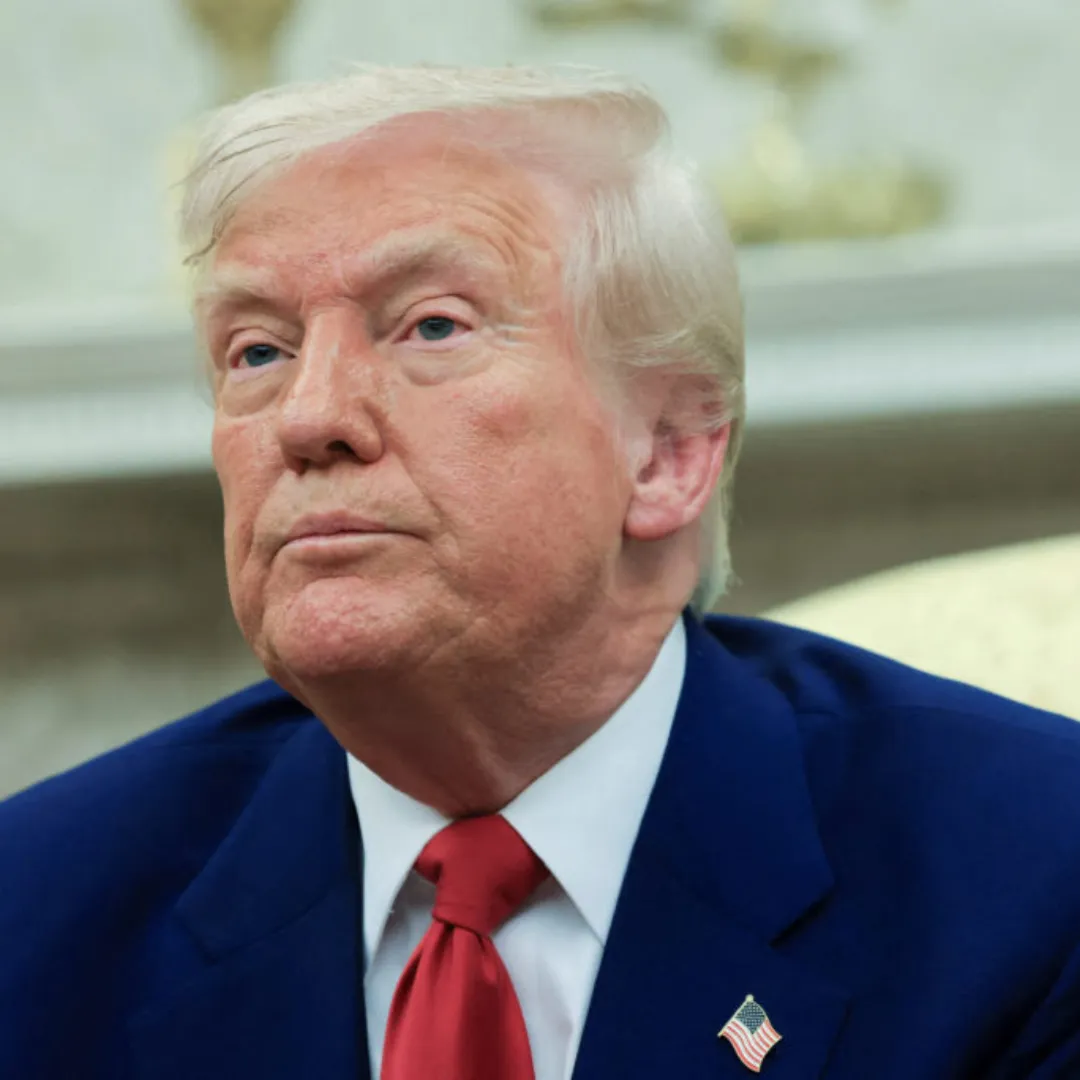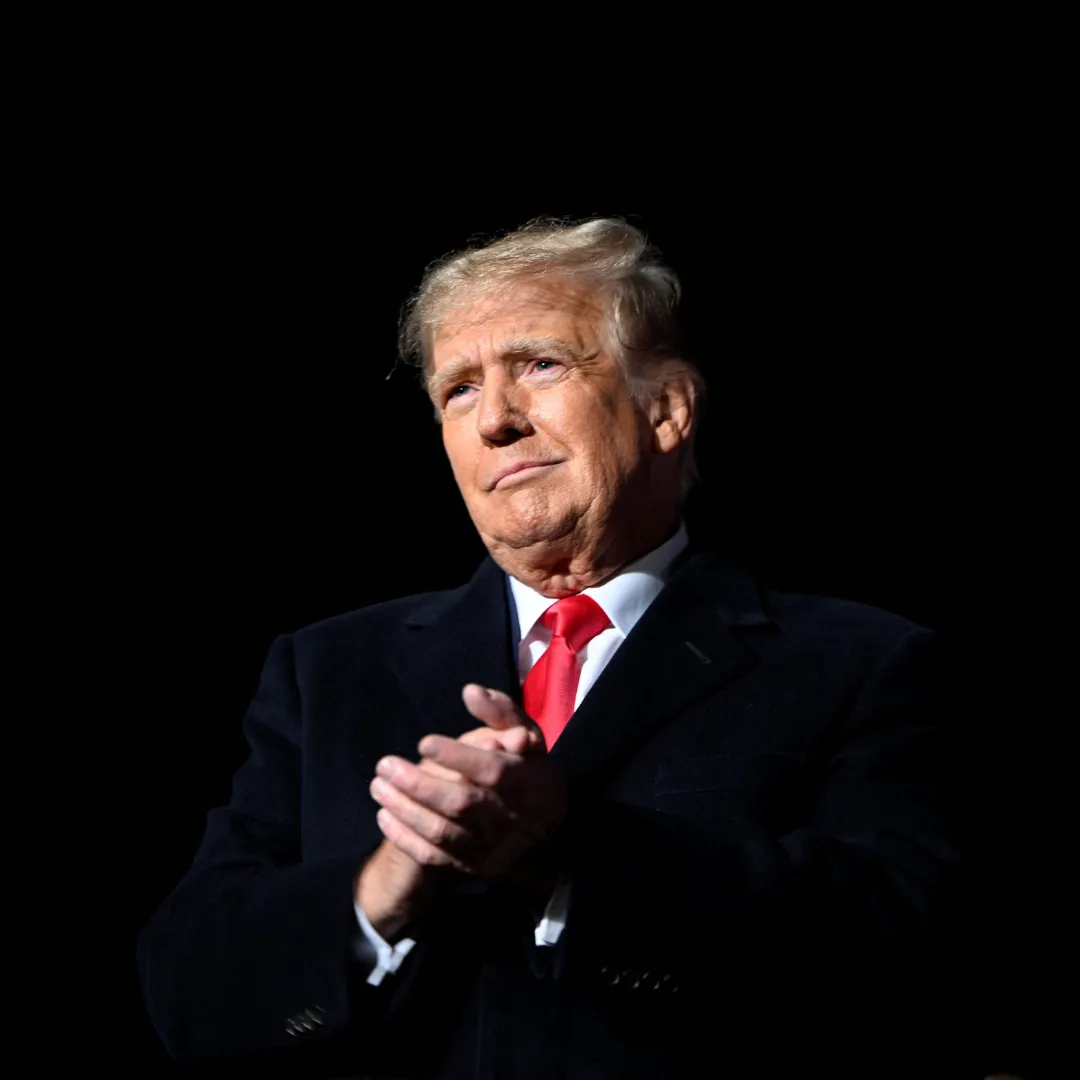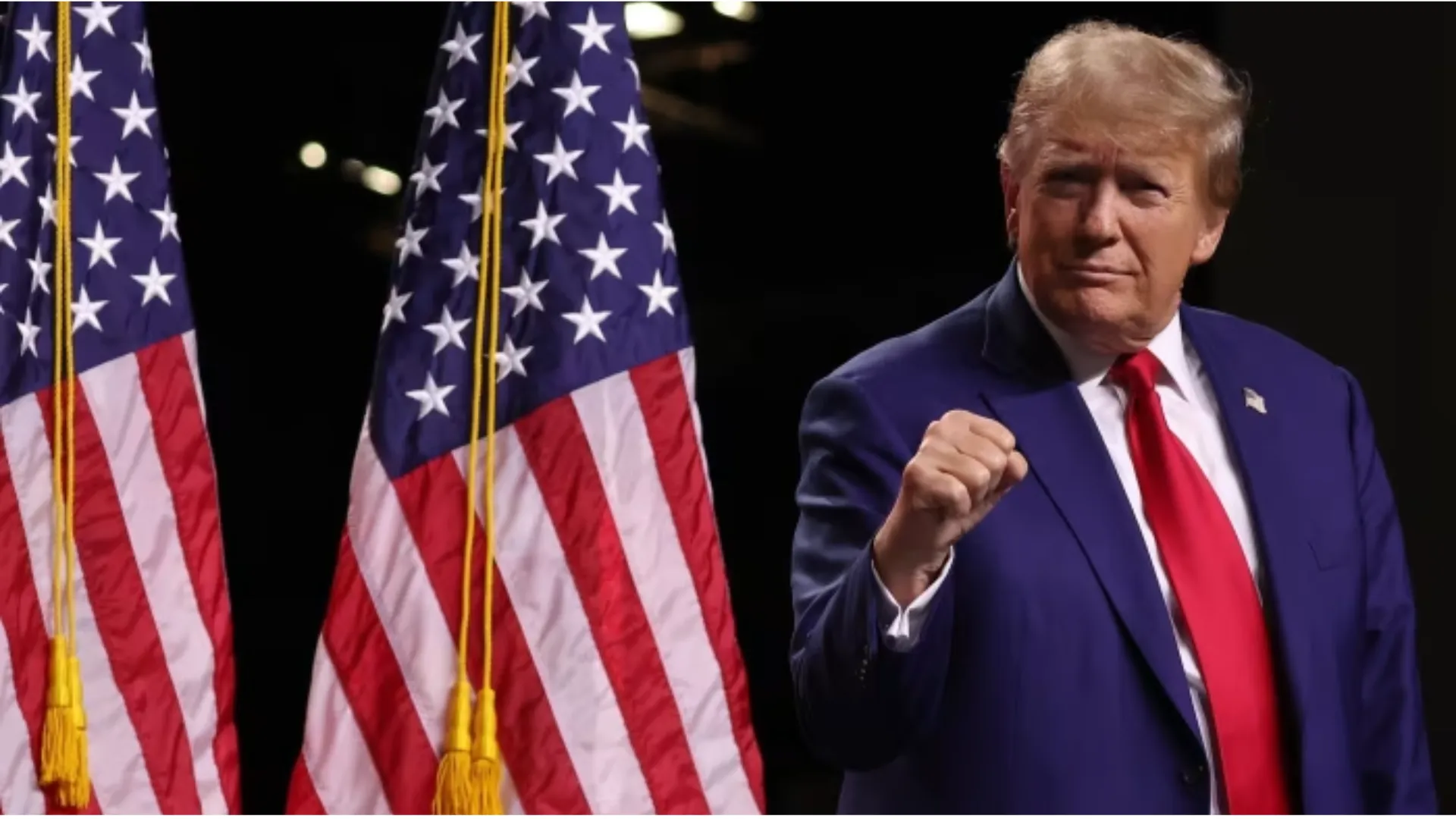
In a statement that has stirred up conversation, Interior Secretary Doug Burgum expressed his belief that there is enough space on Mount Rushmore for President Donald Trump’s face.
The comment was made during an appearance on Lara Trump’s new Fox News show, “My View with Lara Trump,” which aired on Saturday. Burgum, a prominent figure in the Trump administration, was joined by Lara Trump, the former president’s daughter-in-law, to discuss various issues surrounding the National Park Service, public monuments, and the future of American history monuments.
Burgum’s remarks come just days after President Trump signed an executive order granting Burgum the power to decide whether public monuments, memorials, or statues removed during the Biden administration represent a “false construction” of American history.
The executive order, which has stirred debate across the political spectrum, grants the Department of Interior significant authority to determine which monuments should be preserved or potentially reinstated.
During the interview with Lara Trump, the topic of Mount Rushmore and the possibility of President Trump’s face being added to the monument came up. “The Department of Interior is in charge of the National Park Service,” Lara Trump began. “The National Park Service is in charge of Mount Rushmore. A lot of people wonder, will we ever see President Trump’s face on Mount Rushmore? What do you think?”
Burgum’s response was swift: “Well, they certainly have room for it there.” While the comment was made lightheartedly, it fueled further speculation about the potential for President Trump to join the ranks of iconic American presidents whose faces are carved into the granite monument in South Dakota.
The idea of adding Trump to Mount Rushmore is not new. Since Trump’s first term in office, the suggestion has been floated several times by various supporters, with some even proposing it as a formal policy.
Burgum’s statement now adds another layer of fuel to the conversation. If Trump’s face were to be added to the monument, he would join former Presidents George Washington, Thomas Jefferson, Theodore Roosevelt, and Abraham Lincoln, each of whom is currently honored with a prominent place on the monument.

The notion of Trump’s face being added to Mount Rushmore has garnered support from certain members of Congress. Rep. Anna Paulina Luna (R-Fla.) introduced a bill that would make the addition of Trump to the monument a reality.
The bill was introduced shortly after Trump began his second term, and it sparked a wave of public discussion about the possibility of further honoring Trump’s place in American history. According to Luna, this initiative would be a fitting tribute to Trump’s impact on the country and his administration's achievements.
The conversation surrounding the potential addition of Trump’s face to Mount Rushmore reached the Fox News Channel, where a panel of commentators on the show “Outnumbered” voiced support for the idea.
These voices, particularly from conservative outlets, have been advocating for the idea of recognizing Trump in such a prominent and historical way, believing it would cement his legacy as one of the most influential presidents in U.S. history.
Burgum also mentioned that in 2026, there will be fireworks and other celebrations around the nation, including at Mount Rushmore, to mark the 250th anniversary of the founding of the United States.
This major milestone in American history will serve as a significant occasion for national celebrations, and it could further fuel discussions around the legacy of past presidents and whether the current president, Trump, should be immortalized on the monument.
The 250th anniversary celebrations at Mount Rushmore are expected to include large-scale fireworks displays, national commemorations, and potential policy initiatives reflecting on the country’s history.
While Burgum did not specifically mention Trump’s face being added to the monument during these celebrations, the 250th anniversary is sure to ignite a fresh wave of debates surrounding American history, national symbols, and the individuals who should be honored for their contributions to the United States.
While Burgum’s comment on Mount Rushmore is drawing attention, it’s important to consider the broader context of his role in the Trump administration’s executive order.
President Trump’s executive order aimed at restoring and preserving certain monuments and statues that were removed during the Biden administration has raised legal and ethical questions. Critics argue that the executive order could potentially whitewash American history by focusing on monuments that some believe represent outdated or offensive views.
The order gives the Department of Interior — and Burgum, in particular — significant power to assess the historical accuracy of monuments and make decisions about whether they should be preserved, replaced, or reinstated.
These decisions will have a lasting impact on the public’s understanding of American history and the symbols that represent the nation’s past.
Burgum’s influence on the National Park Service will be critical in the coming years as the nation grapples with how to address monuments and memorials that have been deemed controversial.
This includes, but is not limited to, statues of historical figures associated with slavery, racism, and colonialism. As public opinion continues to shift on these issues, the decisions made by the Department of Interior will shape the way Americans view their history.
Whether or not Trump’s face is ever added to Mount Rushmore, the conversation itself speaks to the ongoing debate about how history should remember political leaders. In the case of Trump, some of his supporters believe that his achievements — particularly the economic boom prior to the pandemic, his foreign policy successes, and his judicial appointments — have earned him a place among the greats of American history.
However, others argue that Trump’s divisive leadership style, his handling of the COVID-19 pandemic, and his role in the events surrounding the January 6th Capitol insurrection should be weighed when considering his place in history. As debates about the former president’s legacy continue, his supporters and critics alike will likely continue to disagree on whether his face belongs on such a revered monument as Mount Rushmore.
Adding Trump to the monument would certainly be a highly symbolic move, representing a distinct moment in American history. If it happens, it would reflect both the strong loyalty of Trump’s supporters and the intense opposition he faced throughout his time in office.
For now, the debate about Trump’s place on Mount Rushmore remains speculative, but it highlights the deep political divides in the country. Whether he eventually joins Washington, Jefferson, Roosevelt, and Lincoln on the monument or not, Trump’s legacy as the 45th president will be debated for years to come.
The Wisconsin Supreme Court race and Trump’s executive actions are part of a broader effort to shape the future of American politics, and the continued conversation about his place in history is a reflection of his ongoing influence. Whether the president’s face is added to Mount Rushmore in 2026 or beyond, the idea itself speaks volumes about the way we view presidential legacies and what it means to be remembered as a defining figure in American history.
The debate over whether President Trump should be added to Mount Rushmore is a reflection of the political polarization that has defined much of the past decade in American politics. With figures like Musk and Burgum weighing in on the issue, it’s clear that Trump’s influence continues to shape the national conversation in unexpected ways.
While the idea of Trump’s face on Mount Rushmore remains controversial, it has brought forward larger questions about the role of monuments in reflecting the values of the nation. As the 250th anniversary of the United States approaches, this debate will likely continue, with the question of how we honor our past and our leaders becoming more significant than ever before.




